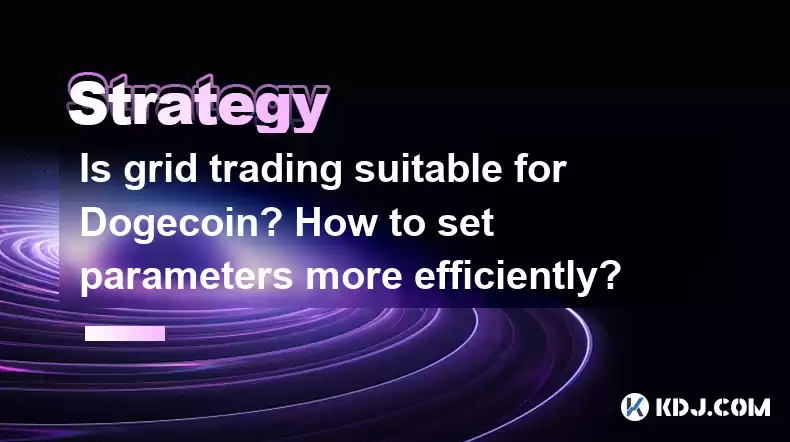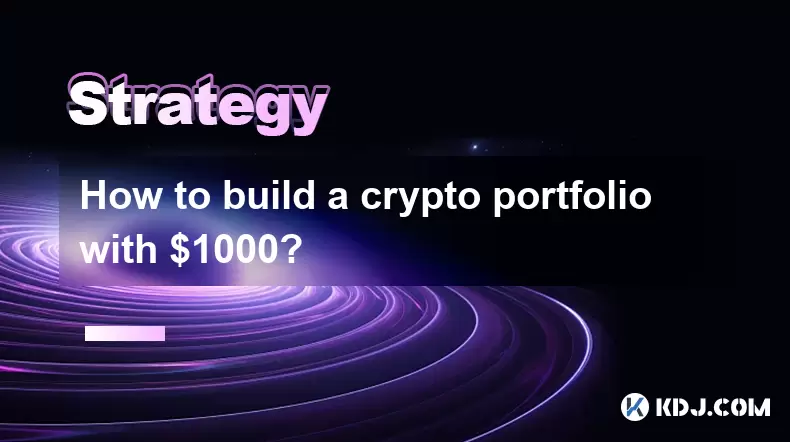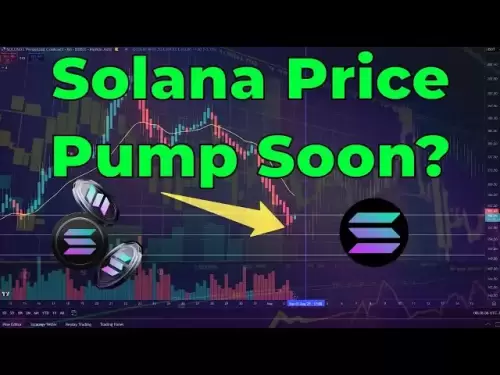-
 Bitcoin
Bitcoin $114400
1.32% -
 Ethereum
Ethereum $3499
2.20% -
 XRP
XRP $2.922
4.26% -
 Tether USDt
Tether USDt $0.0000
0.03% -
 BNB
BNB $752.6
1.53% -
 Solana
Solana $161.8
1.64% -
 USDC
USDC $0.9999
0.01% -
 TRON
TRON $0.3267
1.32% -
 Dogecoin
Dogecoin $0.1991
3.02% -
 Cardano
Cardano $0.7251
3.29% -
 Hyperliquid
Hyperliquid $38.32
3.36% -
 Stellar
Stellar $0.3972
7.58% -
 Sui
Sui $3.437
2.74% -
 Chainlink
Chainlink $16.29
3.65% -
 Bitcoin Cash
Bitcoin Cash $545.3
3.70% -
 Hedera
Hedera $0.2482
7.49% -
 Ethena USDe
Ethena USDe $1.001
0.03% -
 Avalanche
Avalanche $21.40
2.02% -
 Toncoin
Toncoin $3.579
1.56% -
 Litecoin
Litecoin $109.3
2.20% -
 UNUS SED LEO
UNUS SED LEO $8.951
-0.18% -
 Shiba Inu
Shiba Inu $0.00001220
2.75% -
 Polkadot
Polkadot $3.613
2.99% -
 Uniswap
Uniswap $9.173
3.78% -
 Monero
Monero $302.6
2.62% -
 Dai
Dai $0.0000
0.00% -
 Bitget Token
Bitget Token $4.320
1.52% -
 Pepe
Pepe $0.00001048
3.40% -
 Cronos
Cronos $0.1314
4.33% -
 Aave
Aave $259.4
3.54%
Is grid trading suitable for Bitcoincoin? How to set parameters more efficiently?
Grid trading can be effective for Dogecoin due to its volatility, but setting optimal parameters and managing risks is crucial for success.
Apr 29, 2025 at 06:43 am

Is grid trading suitable for Dogecoin? How to set parameters more efficiently?
Grid trading is a popular automated trading strategy that involves setting up buy and sell orders at fixed price intervals, or "grids," within a specified range. Many traders wonder if this strategy can be effectively applied to Dogecoin, a cryptocurrency known for its volatility and high trading volume. In this article, we will explore the suitability of grid trading for Dogecoin and provide detailed guidance on how to set parameters more efficiently.
Understanding Grid Trading
Grid trading is designed to profit from market volatility by taking advantage of price movements within a predefined range. The strategy involves setting up a series of buy and sell orders at regular intervals, creating a grid of trades that can be executed automatically. When the price moves up or down, the grid trading system buys low and sells high within the set range, aiming to generate profits from these movements.
Suitability of Grid Trading for Dogecoin
Dogecoin, with its significant price volatility, presents both opportunities and challenges for grid trading. The high volatility of Dogecoin can lead to frequent price movements within the grid, potentially increasing the number of trades and profits. However, the same volatility can also result in significant losses if the price moves outside the grid range unexpectedly.
Advantages of Grid Trading for Dogecoin:
- Frequent Trading Opportunities: Dogecoin's volatility can trigger numerous trades within the grid, providing multiple opportunities to profit from small price movements.
- Automated Trading: Grid trading can be fully automated, allowing traders to take advantage of Dogecoin's 24/7 market without constant monitoring.
- Risk Management: By setting stop-loss orders and adjusting grid parameters, traders can manage their risk exposure more effectively.
Challenges of Grid Trading for Dogecoin:
- High Volatility Risk: Rapid price movements can cause the price to move outside the grid range, resulting in potential losses.
- Market Gaps: Dogecoin's price can experience sudden gaps, which can lead to missed trades or unexpected losses.
- Transaction Fees: Frequent trading within the grid can accumulate high transaction fees, which can eat into profits.
Setting Up Grid Trading for Dogecoin
To set up grid trading for Dogecoin efficiently, it is crucial to choose the right parameters. Here are the key steps and considerations:
Choosing the Right Exchange
- Select a reputable exchange that supports Dogecoin and offers grid trading features. Popular exchanges like Binance and KuCoin provide these functionalities.
- Ensure the exchange has low transaction fees to maximize your profits from frequent trades.
Setting the Grid Range
- Analyze Dogecoin's historical price data to determine a suitable grid range. Consider using technical analysis tools to identify support and resistance levels.
- Set the upper and lower bounds of the grid to encompass the expected price range. For example, if Dogecoin is trading between $0.10 and $0.20, you might set your grid range from $0.09 to $0.21.
Determining Grid Intervals
- Choose the number of grid levels based on your risk tolerance and expected price volatility. More grid levels can increase the number of trades but may also increase transaction costs.
- Calculate the grid interval by dividing the total grid range by the number of grid levels. For instance, if the grid range is $0.12 and you choose 10 grid levels, the interval would be $0.012.
Setting Investment Amounts
- Determine the total investment amount you are willing to allocate to the grid. This amount will be spread across the grid levels.
- Calculate the investment per grid level by dividing the total investment by the number of grid levels. For example, if you invest $100 and have 10 grid levels, each level would be allocated $10.
Adjusting Stop-Loss and Take-Profit Levels
- Set stop-loss orders to limit potential losses if the price moves outside the grid range. Consider setting the stop-loss at a level that aligns with your risk tolerance.
- Implement take-profit orders to secure profits when the price reaches certain levels within the grid. Adjust these levels based on your profit targets and market conditions.
Monitoring and Adjusting the Grid
- Regularly monitor the performance of your grid trading strategy. Use trading platforms that provide real-time data and analytics to assess the effectiveness of your grid.
- Be prepared to adjust the grid parameters based on changing market conditions. This may include widening or narrowing the grid range, changing the number of grid levels, or adjusting investment amounts.
Example of Setting Up a Grid Trading Strategy for Dogecoin
To illustrate the process, let's walk through an example of setting up a grid trading strategy for Dogecoin on the Binance exchange:
- Choose the Exchange: Log in to your Binance account and navigate to the grid trading section.
- Select Dogecoin Pair: Choose the Dogecoin/USDT trading pair.
- Set Grid Range: After analyzing Dogecoin's recent price movements, decide to set the grid range from $0.09 to $0.21.
- Determine Grid Levels: Opt for 10 grid levels to balance the number of trades with transaction costs.
- Calculate Grid Interval: Divide the grid range ($0.12) by the number of grid levels (10) to get a grid interval of $0.012.
- Set Investment Amount: Allocate $100 to the grid, with $10 per grid level.
- Adjust Stop-Loss and Take-Profit: Set a stop-loss at $0.085 and a take-profit at $0.215.
- Monitor and Adjust: Regularly check the performance of your grid and be ready to make adjustments as needed.
Optimizing Grid Trading Parameters
To optimize your grid trading strategy for Dogecoin, consider the following tips:
Use Historical Data for Analysis
- Analyze historical price data to identify patterns and trends that can inform your grid range and interval settings.
- Use tools like moving averages, Bollinger Bands, and other technical indicators to refine your grid parameters.
Adjust Grid Parameters Based on Volatility
- Increase the number of grid levels during periods of high volatility to capitalize on more frequent price movements.
- Widen the grid range if you anticipate larger price swings to avoid missing out on potential trades.
Implement Risk Management Strategies
- Use trailing stop-loss orders to lock in profits and limit losses as the price moves within the grid.
- Consider using a portion of your profits to reinvest in the grid, thereby increasing your potential returns.
Monitor Transaction Fees
- Keep track of transaction fees and adjust your grid parameters to minimize their impact on your overall profitability.
- Choose exchanges with lower fees or consider trading larger volumes to benefit from fee discounts.
Frequently Asked Questions
1. Can grid trading be used for other cryptocurrencies besides Dogecoin?
Yes, grid trading can be applied to other cryptocurrencies. The suitability of grid trading for a particular cryptocurrency depends on its volatility and trading volume. Cryptocurrencies with high volatility and liquidity, like Bitcoin and Ethereum, can also benefit from grid trading strategies.
2. How often should I adjust my grid trading parameters for Dogecoin?
The frequency of adjustments depends on market conditions and your trading strategy. It is recommended to review and adjust your grid parameters at least weekly, or more frequently if there are significant changes in Dogecoin's price volatility or market trends.
3. What are the potential risks of using grid trading for Dogecoin?
The main risks include high volatility leading to prices moving outside the grid range, market gaps causing missed trades, and accumulating high transaction fees from frequent trading. Proper risk management and regular monitoring can help mitigate these risks.
4. Can I use grid trading on mobile trading apps?
Yes, many exchanges offer mobile trading apps that support grid trading. Ensure that the app you choose provides the necessary features and real-time data to manage your grid trading strategy effectively.
Disclaimer:info@kdj.com
The information provided is not trading advice. kdj.com does not assume any responsibility for any investments made based on the information provided in this article. Cryptocurrencies are highly volatile and it is highly recommended that you invest with caution after thorough research!
If you believe that the content used on this website infringes your copyright, please contact us immediately (info@kdj.com) and we will delete it promptly.
- Cold Wallet vs. MetaMask: A Web3 Wallet Revolution?
- 2025-08-04 06:30:12
- Chainlink Price Prediction: Bearish Continuation or a Bullish Reversal?
- 2025-08-04 06:35:12
- Bitcoin Whale Alert: Navigating Liquidation Risks in a Volatile Market
- 2025-08-04 07:10:12
- BNB Price Under Pressure: Navigating the Bearish Trend and Market Sentiment
- 2025-08-04 07:15:12
- Bitcoin Price Wobbles: Options Analysis Points to Bullish Undercurrent Despite Dip
- 2025-08-04 04:30:12
- Ark Invest, Coinbase, and Bitcoin: Decoding the Crypto Investment Landscape in NYC
- 2025-08-04 04:30:12
Related knowledge

How to avoid common crypto investment mistakes?
Jul 13,2025 at 01:35am
Understanding the Risks of Crypto InvestmentInvesting in cryptocurrency can be highly rewarding, but it also comes with significant risks. One of the ...

What is a long-short crypto strategy?
Jul 15,2025 at 10:56am
Understanding the Basics of a Long-Short Crypto StrategyA long-short crypto strategy is an investment approach where traders simultaneously take long ...

What is a long-short crypto strategy?
Jul 11,2025 at 01:28pm
Understanding the Basics of Long-Short Crypto StrategyA long-short crypto strategy is an investment approach where traders take both long and short po...

How to use the RSI indicator for crypto?
Jul 12,2025 at 03:56pm
Understanding the RSI Indicator in Cryptocurrency TradingThe Relative Strength Index (RSI) is a momentum oscillator used to measure the speed and chan...

Is copy trading a good strategy for crypto beginners?
Jul 12,2025 at 08:28am
Understanding Copy Trading in the Cryptocurrency MarketCopy trading is a strategy where novice traders replicate the trades of experienced investors a...

How to build a crypto portfolio with $1000?
Jul 13,2025 at 08:14pm
Understanding the Basics of Cryptocurrency InvestmentBuilding a crypto portfolio with $1000 starts with understanding the fundamentals of cryptocurren...

How to avoid common crypto investment mistakes?
Jul 13,2025 at 01:35am
Understanding the Risks of Crypto InvestmentInvesting in cryptocurrency can be highly rewarding, but it also comes with significant risks. One of the ...

What is a long-short crypto strategy?
Jul 15,2025 at 10:56am
Understanding the Basics of a Long-Short Crypto StrategyA long-short crypto strategy is an investment approach where traders simultaneously take long ...

What is a long-short crypto strategy?
Jul 11,2025 at 01:28pm
Understanding the Basics of Long-Short Crypto StrategyA long-short crypto strategy is an investment approach where traders take both long and short po...

How to use the RSI indicator for crypto?
Jul 12,2025 at 03:56pm
Understanding the RSI Indicator in Cryptocurrency TradingThe Relative Strength Index (RSI) is a momentum oscillator used to measure the speed and chan...

Is copy trading a good strategy for crypto beginners?
Jul 12,2025 at 08:28am
Understanding Copy Trading in the Cryptocurrency MarketCopy trading is a strategy where novice traders replicate the trades of experienced investors a...

How to build a crypto portfolio with $1000?
Jul 13,2025 at 08:14pm
Understanding the Basics of Cryptocurrency InvestmentBuilding a crypto portfolio with $1000 starts with understanding the fundamentals of cryptocurren...
See all articles

























































































